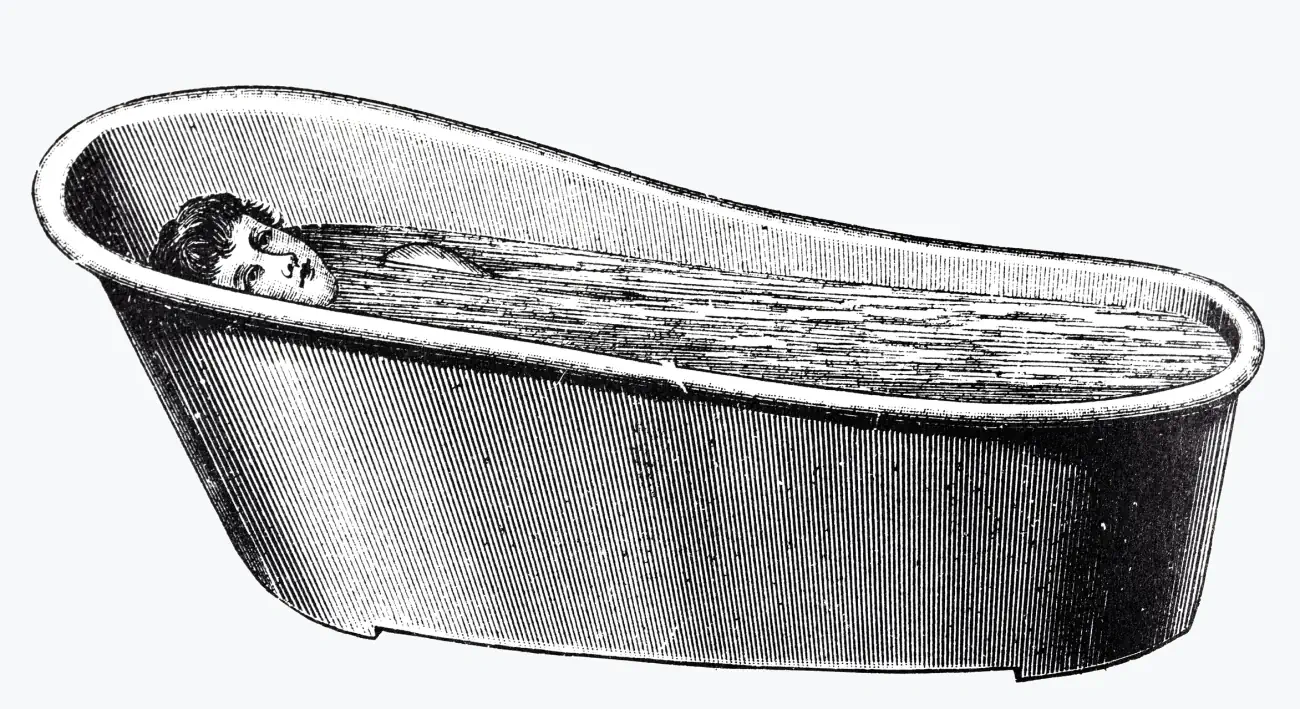How Can a Hot Bath Help you Lose Weight ?
- Nature Source Chaude
- Published on
- Updated on 31 March 2025
Can a bath really help you lose weight? When hot, a bath is pleasant and not painful. So how can this moment of relaxation help you lose weight in such a simple way? After introducing you to the health benefits of a hot baths and the advantages they bring when you want to lose weight, we’ll have a look at the most effective way to take a hot bath.
IN SUMMARY :
What are the health benefits of a hot bath?
In a hot bath, the body is affected by three physical effects: heat, water pressure and buoyancy. Bathing therefore helps to:
- Improve blood circulation
- Influence breathing and relieve the airways
- Improve glucose metabolism and reduce inflammation
- Improve cardiovascular health
- Relieve tired muscles and reduce pain
- Provide deep relaxation
- Fight depression
- Improve sleep
- Boost immunity
- Support skin immunity
- etc.
All these benefits are explained in more detail in our article: The Amazing Health Benefits of a Hot Bath. However, we are going to return to certain key points which will help us to better understand the relationship between a hot bath and weight loss.
A hot bath, an ally in losing weight ?
Hot baths are recommended for people who want to lose weight because they help :
- Activate the metabolism
- Eliminate water retention in a natural way
- Reduce the appetite
When you soak in a bath, the heat and pressure have the effect of increasing your body temperature, improving your blood circulation and activating your metabolism.
As your body temperature rises, so does your metabolism. If your basal metabolic rate (the amount of energy you burn at rest) is low, your body will burn fewer calories per day, making it harder to burn fat.
In a hot bath, the heat and pressure of the water affect the blood and lymph vessels all over your body, allowing your blood and lymph to circulate more fluidly. Circulation is improved down to the extremities of the body (hands and feet), helping to eliminate waste products and excess water that have accumulated in the tissues and which are responsible for swelling or oedema. The hydrostatic pressure of the water during the bath also helps to prevent cellulite.
A hot bath is also associated with appetite control. It makes you forget about hunger.
When people are exposed to high levels of stress, either from the demands of daily life or from dieting, the autonomic nervous system is disrupted, sleep quality deteriorates and the circadian rhythm affects hormones and metabolism. As a result, the secretion of leptin, an appetite-suppressing hormone, decreases and the secretion of ghrelin, an appetite-stimulating hormone, increases.
When soaking in hot bath, the buoyancy effect helps to regulate the autonomic nervous system and stabilise the secretion of appetite hormones. What’s more, when the body is compressed by the pressure of the water, appetite is reduced. The bath also improves digestion.
So, for all these reasons, hot baths help to build a body that is less prone to weight gain and also strengthen the immune system.
Key points to bear in mind when soaking a hot bath for weight loss
Soaking in a hot bath is an effective way to lose weight, but you need to be careful about how you soak. To achieve the above benefits, it’s best to keep the following points in mind:
- The temperature of the bath should be between 38°C and 40°C.
- Take a full bath, up to the neck, for 10-30 minutes.
But bear in mind that slight differences in water temperature can actually cause the body to react in completely the opposite way. The effects of the bath are described here in a general way. There’s nothing to stop you adjusting the temperature and duration to suit your current physical condition and your goals.
To avoid bathing accidents (dizziness, vertigo, etc.), it is essential that the water temperature is kept below 40°C and that the bath does not last longer than 30 minutes. Baths between 40°C and 42°C require greater care and are not recommended for people with cardiovascular problems. People with chronic conditions such as high blood pressure and the elderly should be cautious as a hot bath can put a strain on the heart! Always check the water temperature with a thermometer 🌡️.
One of the objectives is to slightly increase your body temperature (by a few tenths of a degree) in order to induce perspiration (sweat), which also increases your metabolism and thus facilitates weight loss.
It’s best to avoid bathing at 37°C, as it’s more difficult to achieve a warming effect with water close to body temperature.
To raise the body temperature by 1°C (hyperthermic bath), the recommended bathing times (indicative) are 20-30 minutes for a bath at 39°C, 15 minutes at 40°C, 10 minutes at 41°C. Ideally, you should bathe until you start to sweat.
Similarly, a full body bath is preferable to a half bath. It is the one that has the greatest effect on weight loss, burning almost twice as many calories.
Because a large surface area of your body is immersed, you heat up more quickly and you are more sensitive to the effects of water pressure and buoyancy.
When you immerse yourself up to your shoulders, the pressure of the water acting on your whole body is around 520 kg. This pressure, applied evenly in all directions, has a considerable massaging effect, even if you don’t feel anything in particular. In addition, important lymph nodes are located around the collarbone and the bath allows more intense lymphatic drainage of the upper body (shoulders, chest, neck, arms).
Some precautions to take when you bathe:
- Wait at least one hour after a meal before bathing.
- Stay hydrated before and after bathing.
- Avoid long baths
If you soak in a hot bath immediately after eating, the blood concentrated in the digestive tract will be distributed throughout the body, causing indigestion.
You can, of course, hydrate while bathing in order to avoid getting too hot. Ideally, you should hydrate with a lukewarm (at least room temperature) or hot drink to prevent the body from cooling down.
Long baths soak (depending on water hardness) are not recommended as they can dry out the skin. A maximum of 30 minutes is recommended.
💡How to improve bath soaking efficiency and water quality ?
Finally, it may be a good idea to increase the effectiveness of the bath by using products that help you feel the effects better. Bath additives make it possible to bathe in carbogeneous water (CO₂), the effects of which help to improve skin micro-circulation a little further while encouraging perspiration.
To obtain carbogeneous water, you need to add a mixture of bicarbonate of soda (a base) and citric acid (an acid) to the bath water. The chemical reaction between these 2 ingredients and the water will produce carbon dioxide as in a hot spring, but also sodium citrate (not natural). Be sure to maintain a 2:1 ratio between these 2 ingredients.
🛁 For an effervescent bath (approximate quantities)
– 60 g baking soda
– 30 g citric acid







